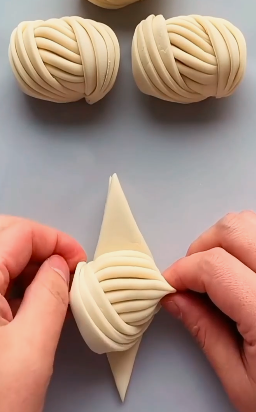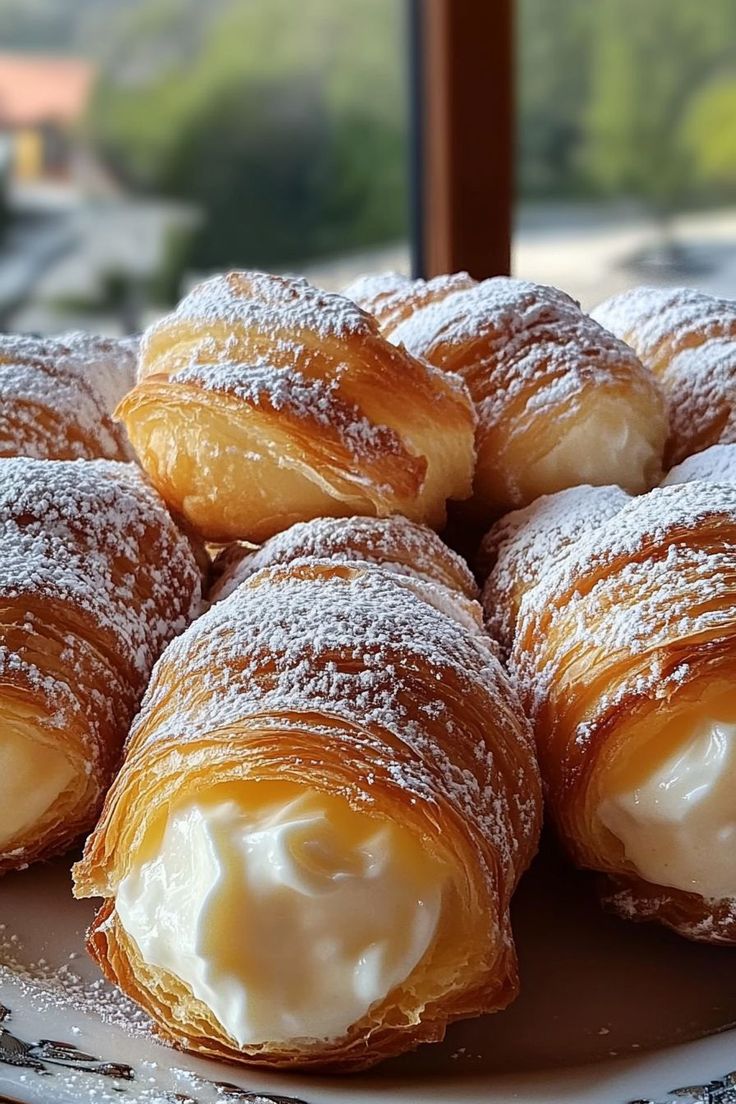Introduction
There’s something magical about pastries. Flaky, golden, buttery layers filled with sweet creams, savory meats, or seasonal fruits—they evoke comfort, tradition, and indulgence. But what makes a pastry so irresistible? It all starts with the dough.

Whether you’re baking a classic French croissant, an apple turnover, or a savory meat pie, mastering dough pastry recipes is your gateway to a world of culinary creativity. This comprehensive guide will walk you through the types of dough used in pastries, provide tried-and-true recipes, and offer professional baking tips to elevate your pastry-making game. By the end of this article, you’ll not only know how to make mouthwatering dough pastries—you’ll understand the why behind every fold, chill, and bake.
Understanding Dough in Pastry Making
What Is Dough?
Dough is a mixture of flour and liquid (often water or milk), sometimes combined with fat, sugar, eggs, and leavening agents like yeast or baking powder. When it comes to pastry, dough is typically enriched and manipulated to create textures that are tender, crisp, or flaky.
Types of Pastry Dough
There are several types of dough used in pastry-making, each with a specific texture and purpose:
Puff Pastry (Pâte Feuilletée): A laminated dough with many layers, known for its flaky, buttery texture. Used in croissants, mille-feuille, and tarts.
Shortcrust Pastry (Pâte Brisée): Crumbly and tender, ideal for pies, quiches, and tart shells.
Choux Pastry (Pâte à Choux): Light and airy dough used for éclairs, cream puffs, and profiteroles.
Phyllo Dough: Ultra-thin sheets used in Greek and Middle Eastern desserts like baklava.
Yeasted Dough: Soft and fluffy dough used in Danish pastries and brioche.
Hot Water Crust: A sturdy dough ideal for meat pies and raised pies.
Each dough serves a purpose, and understanding the differences will help you choose the right one for your baking project.
Top Dough Pastry Recipes from Around the World
Let’s explore a curated list of globally loved dough pastry recipes, ranging from sweet to savory. Each one highlights a unique dough technique and flavor profile.
- Classic Croissants (France)
Dough Type: Laminated yeasted dough
Filling: None (optional chocolate or almond)
Taste Profile: Buttery, flaky, airy
Croissants are the crown jewel of laminated pastries. The dough is layered with butter, folded, and rolled multiple times to create hundreds of delicate layers. A perfect croissant should puff beautifully in the oven and have a golden, crisp crust.
- Apple Turnovers
Dough Type: Puff pastry
Filling: Spiced apple compote
Taste Profile: Sweet, tangy, buttery
Apple turnovers are individual hand pies made with puff pastry and apple filling. They’re perfect for breakfast or dessert and often finished with a sugar glaze.
- Empanadas (Latin America)
Dough Type: Shortcrust or yeasted dough
Filling: Ground beef, cheese, chicken, or vegetables
Taste Profile: Savory and hearty
Empanadas can be baked or fried. The dough is rolled out, filled, sealed, and cooked until golden. They’re versatile and ideal for snacking or full meals.
- Baklava (Middle East)
Dough Type: Phyllo dough
Filling: Nuts (walnut, pistachio), spices, syrup
Taste Profile: Sweet, nutty, syrupy
Baklava is made by layering sheets of phyllo dough with ground nuts and then baking and soaking it in syrup. It’s sticky, sweet, and utterly luxurious.
- Churros (Spain/Mexico)
Dough Type: Choux pastry
Filling: Optional (dulce de leche or chocolate)
Taste Profile: Crispy, sweet, cinnamon-sugary
Churros are fried pastries made from choux dough, typically served with hot chocolate for dipping. The dough is piped into hot oil, fried, and rolled in sugar.
- Meat Pies (UK, Australia)
Dough Type: Hot water crust or shortcrust
Filling: Minced meat, onions, gravy
Taste Profile: Savory, hearty
These pies are portable, comforting, and rich in flavor. The crust holds up well to dense fillings, making them great for picnics or lunchboxes.
- Danish Pastries
Dough Type: Laminated yeasted dough
Filling: Cream cheese, fruit, jam, custard
Taste Profile: Sweet, soft, flaky
Danishes combine the techniques of puff pastry with yeast-risen dough. The result is a tender, flaky texture that pairs well with various sweet fillings.
- Brioche
Dough Type: Enriched yeasted dough
Filling: Plain or filled with jam, chocolate, etc.
Taste Profile: Buttery, slightly sweet
Brioche is a French bread with high butter and egg content. It’s tender, fluffy, and versatile enough for both sweet and savory applications.
Step-by-Step Recipe: Classic Puff Pastry from Scratch
Ingredients:
2 ½ cups (315g) all-purpose flour
1 tsp salt
1 cup (226g) cold unsalted butter, cubed
⅔ cup (160ml) ice water
Instructions:
- Mix: Combine flour and salt. Cut in half the butter until pea-sized. Add ice water and mix until dough forms.
- Rest: Shape into a rectangle, wrap in plastic, and chill for 30 minutes.
- Roll and Fold (Lamination): On a floured surface, roll out dough into a rectangle. Distribute remaining butter cubes on ⅔ of the dough. Fold into thirds (like a letter). Chill for 30 minutes.
- Repeat Folds: Roll and fold 4–5 more times, chilling between each.
- Use: Your puff pastry is ready for use in any flaky pastry recipe.
Pro Tip: Always keep your dough cold. If the butter melts, you’ll lose those beautiful layers.
Tips for Perfect Dough Pastries
- Use Cold Ingredients: Especially for puff pastry and shortcrust. Cold butter creates steam, which forms layers.
- Don’t Overwork the Dough: Overmixing develops gluten, making the dough tough.
- Rest the Dough: Chilling helps relax gluten and keeps layers intact.
- Use the Right Flour: Pastry flour (low protein) makes for tender crusts; bread flour is good for chewy, yeasted doughs.
- Measure by Weight: For accuracy, especially with flour and butter.
- Egg Wash for Shine: Brush with beaten egg or egg yolk for a glossy finish.
- Steam in the Oven: A tray of water creates steam and helps pastries puff better.
Common Mistakes to Avoid
Butter Leaking Out: This means your dough got too warm. Always chill between folds.
Soggy Bottoms: Preheat your oven and bake at the correct temperature. A baking stone or steel helps.
Underbaking: Especially with laminated doughs, always bake until deeply golden brown.
Using Warm Fillings: Fillings should be cool to prevent melting the dough before baking.
FAQs: Dough Pastry Baking
Q1: Can I freeze pastry dough?
Yes! Most doughs freeze well. Wrap tightly and freeze for up to 3 months. Thaw in the fridge before using.
Q2: Is homemade pastry better than store-bought?
Homemade offers superior taste and texture, though store-bought is convenient. For best results, use high-quality butter and chill adequately.
Q3: Why is my pastry tough?
Likely due to overworking the dough or not enough fat. Use a light touch and keep ingredients cold.
Q4: Can I substitute margarine for butter?
It’s possible, but you’ll sacrifice flavor and texture. High-fat European-style butter gives the best results.
Q5: What’s the best flour for pastry?
Pastry flour or all-purpose flour works best for tender crusts. Bread flour is too high in protein for delicate pastries.
Conclusion
Dough pastries are a timeless treasure in the world of baking. From sweet confections like baklava and Danish pastries to savory classics like meat pies and empanadas, these recipes capture the essence of cultures and kitchens worldwide.
The secret lies in understanding the dough—how it behaves, how it’s built, and how to treat it with respect. Whether you’re layering butter for puff pastry or folding in cheese for a savory tart, each pastry is an opportunity to practice precision and unleash creativity.
So, roll up your sleeves, preheat that oven, and let your baking journey begin. With the tips, techniques, and recipes in this guide, you’ll soon be making dough pastry recipes that are every bit as impressive as they are delicious.
